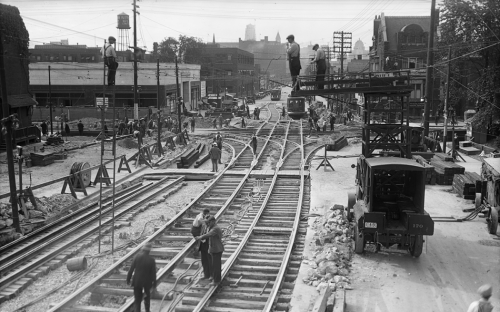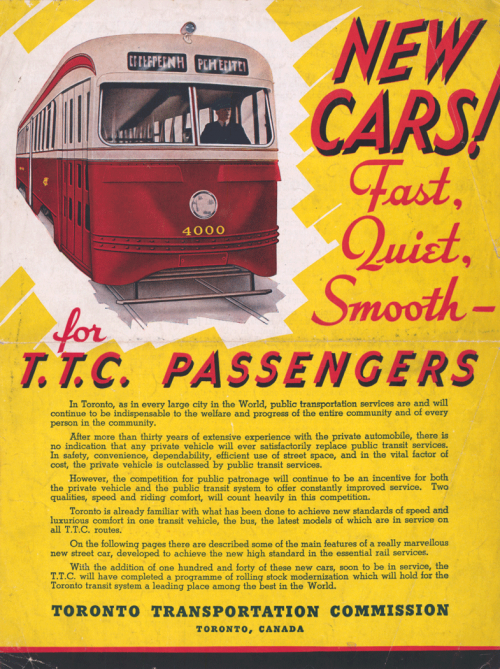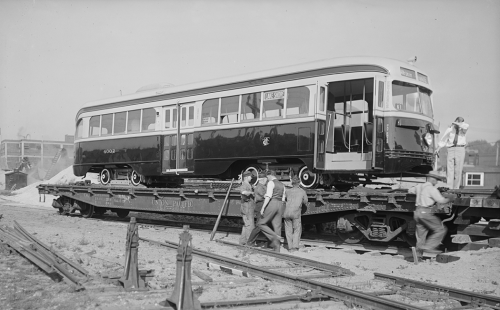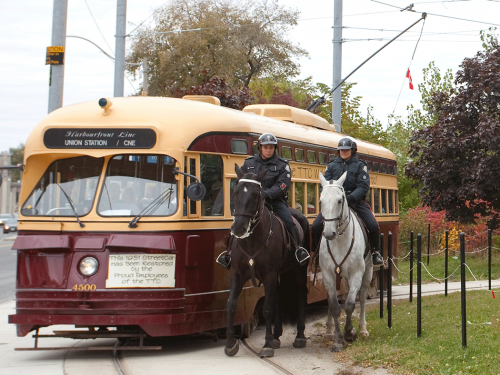
Like everyone else, the TTC experienced hard times during the Great Depression. Construction and rebuilding projects were initiated to provide work for employees. For example, from 1930 to 1939, 49 miles of single track and 124 miles of trolley wire were replaced. The transit workers’ union also made concessions by accepting pay cuts, and gradually the number of operators on streetcars was reduced from two to just one. In this way workforce stability was maintained and the Commission did not have to endure the massive layoffs experienced in other industries.

Falling ridership was a troubling development, prompting the TTC in 1933 to join forces with other street railway companies to develop a new kind of streetcar. They realized that private automobiles were the competition, and that it was necessary to devise a speedy and comfortable vehicle to attract riders back to public transportation.
The answer to the problem was a new streetcar. The Presidents’ Conference Committee (PCC) designed just such a new ride, complete with the snazzy streamlined look that was all the rage in the 1930s. In 1938, the TTC placed an order for 140 new PCC streetcars at a cost of $22,300 each. By late September, the St. Clair line was the first route to be operated entirely with PCCs, and by December, base services on the Bloor and Dundas lines were also turned over to the PCC streetcar.


The new streetcars were an immediate hit with riders. Compared to the Witt cars, they were better at accelerating and braking, and therefore much faster. They had comfortable padded seats, electric heating, and much reduced noise and vibration. So popular were the new streamliners, that an order for another 50 PCCs was placed in the fall of 1940.
After the Second World War, the TTC engaged in a rebuilding and modernization program that saw them purchase another 250 PCC streetcars. By the early 1950s most US cities were abandoning the use of street railways in favour of buses. However, the Commission remained committed to streetcars as they were well suited to Toronto’s narrow streets and short blocks. With American cities phasing out streetcars, the TTC was able to acquire 205 second-hand PCC’s at bargain-basement prices. By 1957, Toronto had the largest fleet in the world by purchasing 745 streamliners.
In November 1972, the TTC voted to continue streetcar operation indefinitely. Their PCC cars would be overhauled, sometimes more than once, to extend their lives. In the late 1980s, the last 19 were rebuilt yet again to provide service on the Harbourfront LRT which opened in 1990, and on other routes during rush hour. Finally, on December 8, 1995, the last regular service run of the venerable PCC streetcar was completed.
